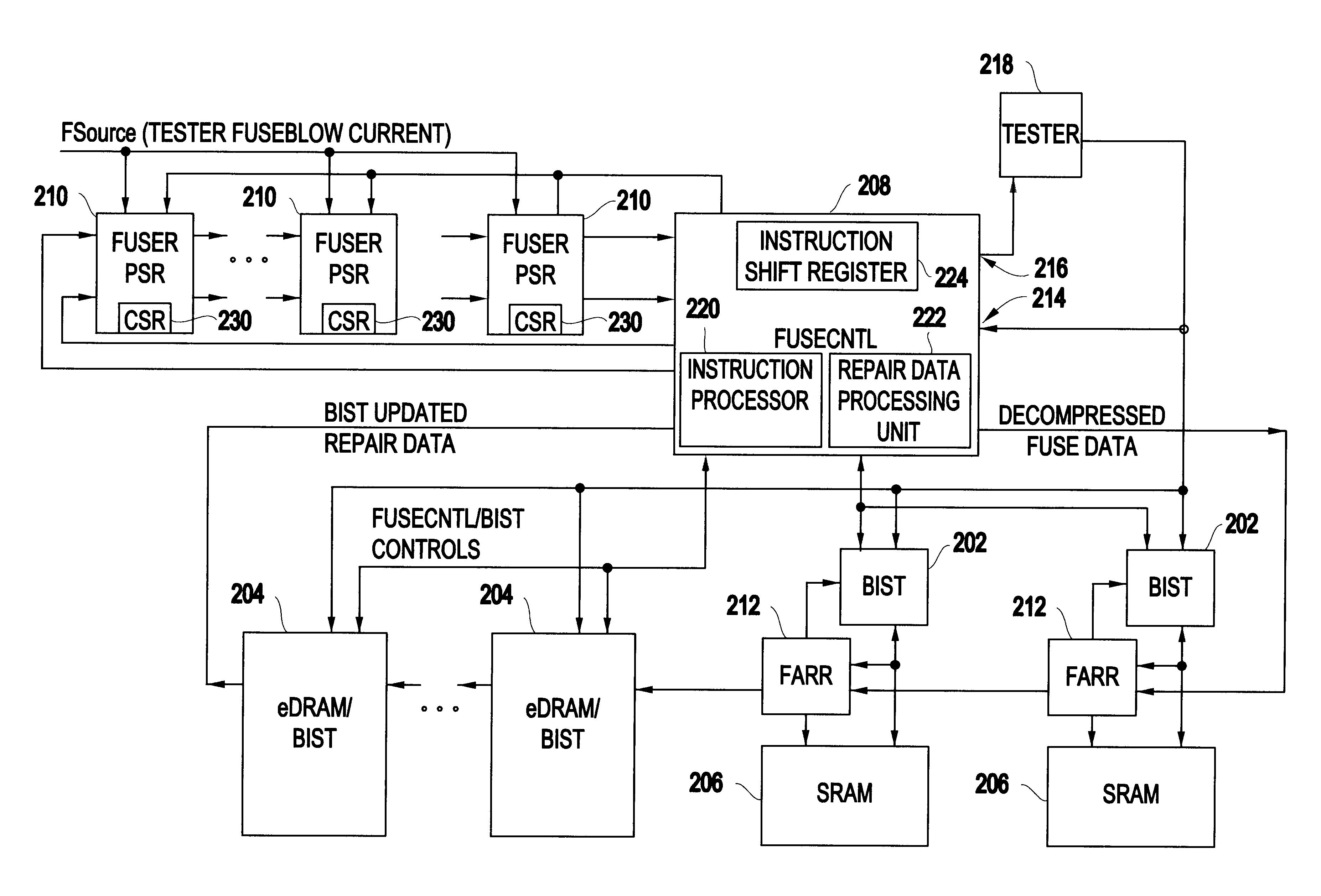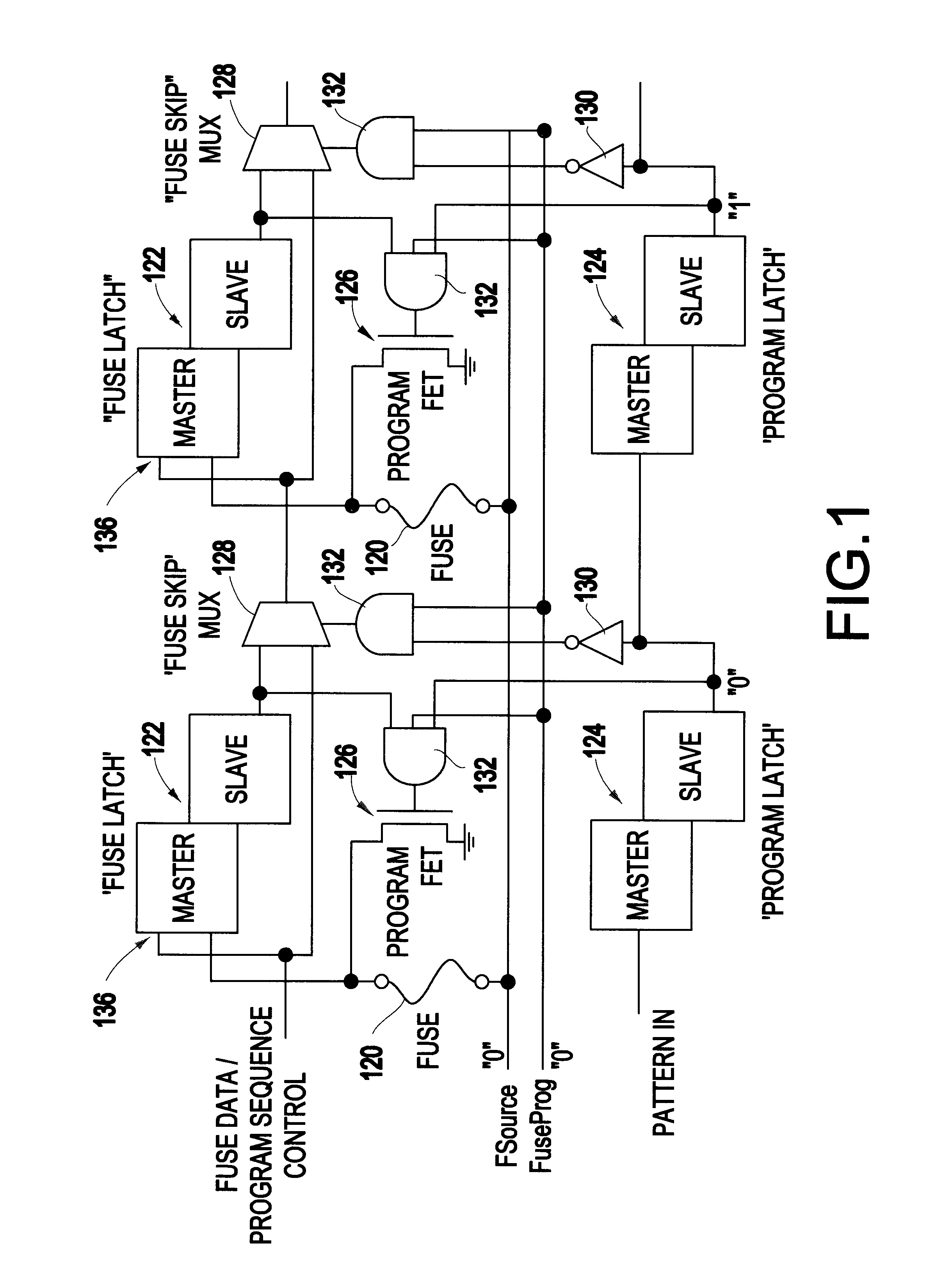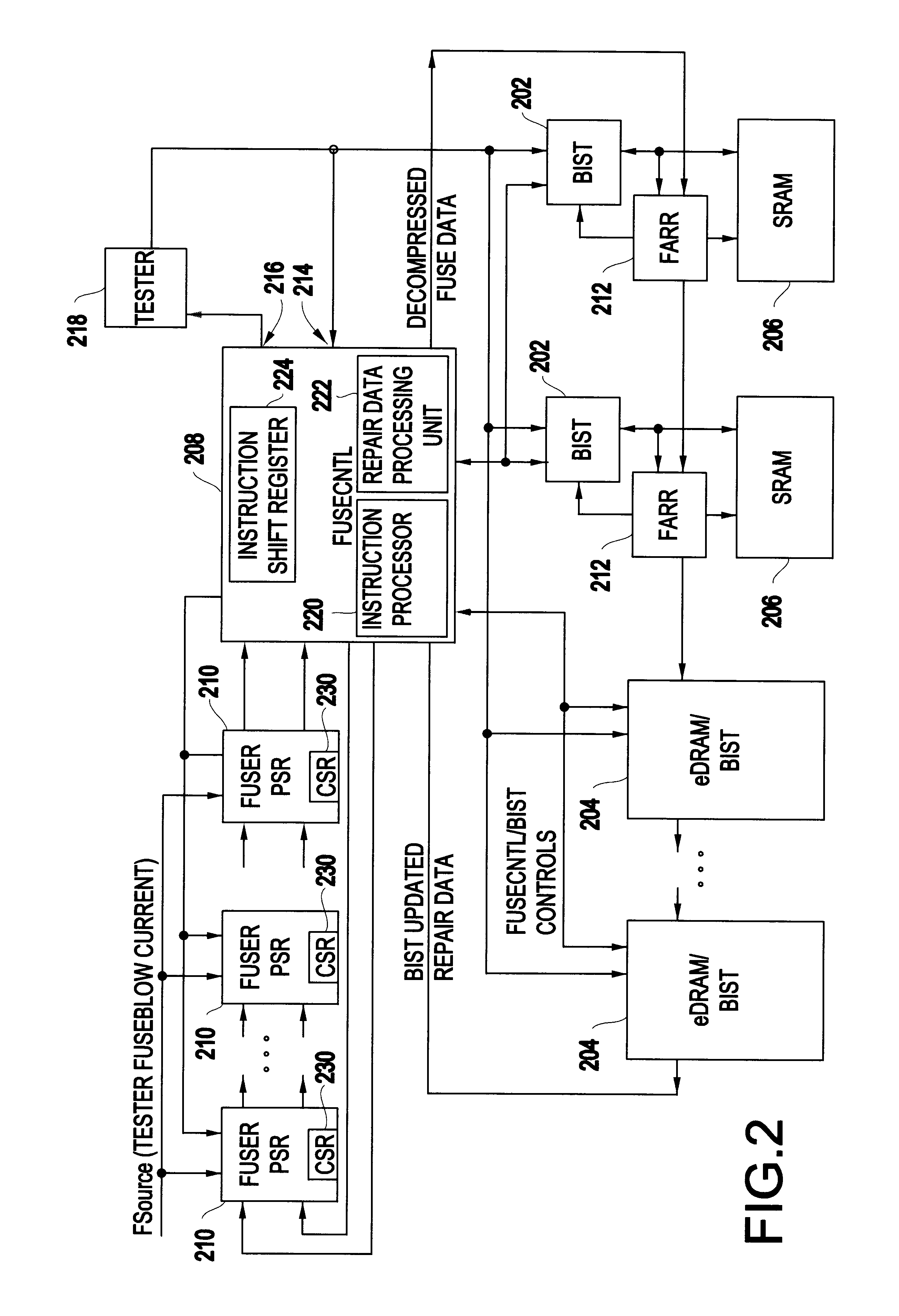Method of electrically blowing fuses under control of an on-chip tester interface apparatus
a technology of electrical blowing and tester interface, which is applied in the field of on-chip fuse controller, can solve the problems of limiting the development and reuse of yesterday's technology, the inability of metal fuses to scale with device technology, and the complicated physical design methodology
- Summary
- Abstract
- Description
- Claims
- Application Information
AI Technical Summary
Benefits of technology
Problems solved by technology
Method used
Image
Examples
Embodiment Construction
One element enabling on-chip self repair is the electrically-programmed fuse (e-fuse). The e-fuse can best be viewed as an electronically programmed read-only bit. The e-fuse shown in FIG. 1 includes several components: the polysilicon fuse 120, a fuse latch 122, a program latch 124, a program field effect transistor (FET) 126, a look-ahead programming multiplexor (mux) 128, an inverter 130, and AND circuits 132.
The fuse 120 has two possible logic states. It can remain intact where its value is evaluated as a logical `zero`. The other state is "programmed" (e.g., blown, opened, etc.) and evaluates to a logical `one` in this example. For example, a direct current (DC) pulse of 10 mA in amplitude and duration of 200 us can program the fuse 120. This relatively high current programs the fuse by dramatically increasing the resistance of the polysilicon link 120. This method of programming poses additional challenges with respect to delivering the current necessary to program each fuse. ...
PUM
 Login to View More
Login to View More Abstract
Description
Claims
Application Information
 Login to View More
Login to View More - R&D
- Intellectual Property
- Life Sciences
- Materials
- Tech Scout
- Unparalleled Data Quality
- Higher Quality Content
- 60% Fewer Hallucinations
Browse by: Latest US Patents, China's latest patents, Technical Efficacy Thesaurus, Application Domain, Technology Topic, Popular Technical Reports.
© 2025 PatSnap. All rights reserved.Legal|Privacy policy|Modern Slavery Act Transparency Statement|Sitemap|About US| Contact US: help@patsnap.com



